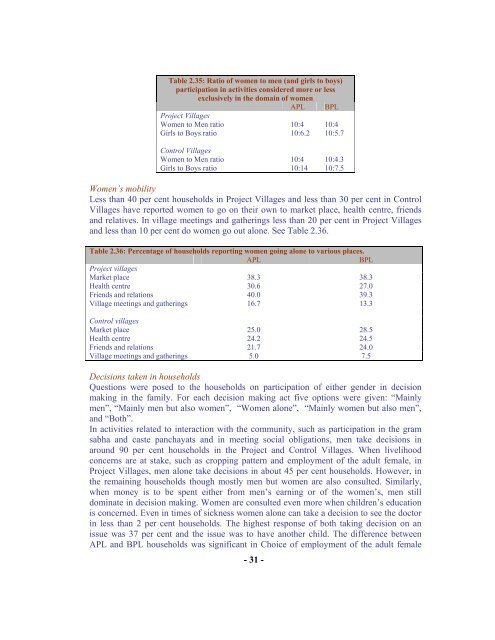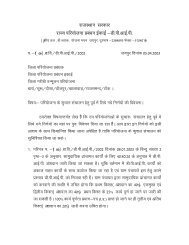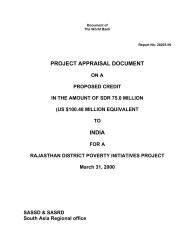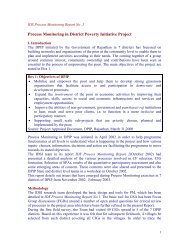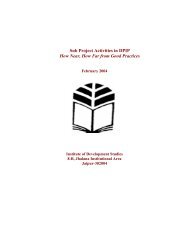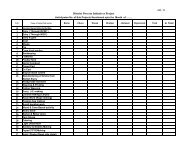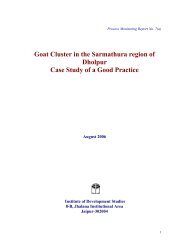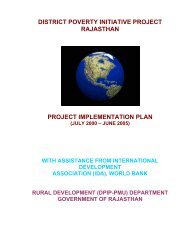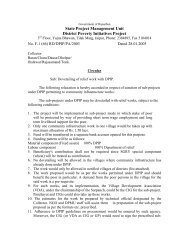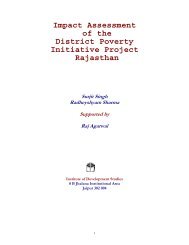Download PDF - Rajasthan Rural Livelihoods Project
Download PDF - Rajasthan Rural Livelihoods Project
Download PDF - Rajasthan Rural Livelihoods Project
You also want an ePaper? Increase the reach of your titles
YUMPU automatically turns print PDFs into web optimized ePapers that Google loves.
Table 2.35: Ratio of women to men (and girls to boys)participation in activities considered more or lessexclusively in the domain of womenAPL BPL<strong>Project</strong> VillagesWomen to Men ratio 10:4 10:4Girls to Boys ratio 10:6.2 10:5.7Control VillagesWomen to Men ratio 10:4 10:4.3Girls to Boys ratio 10:14 10:7.5Women’s mobilityLess than 40 per cent households in <strong>Project</strong> Villages and less than 30 per cent in ControlVillages have reported women to go on their own to market place, health centre, friendsand relatives. In village meetings and gatherings less than 20 per cent in <strong>Project</strong> Villagesand less than 10 per cent do women go out alone. See Table 2.36.Table 2.36: Percentage of households reporting women going alone to various places.APLBPL<strong>Project</strong> villagesMarket place 38.3 38.3Health centre 30.6 27.0Friends and relations 40.0 39.3Village meetings and gatherings 16.7 13.3Control villagesMarket place 25.0 28.5Health centre 24.2 24.5Friends and relations 21.7 24.0Village meetings and gatherings 5.0 7.5Decisions taken in householdsQuestions were posed to the households on participation of either gender in decisionmaking in the family. For each decision making act five options were given: “Mainlymen”, “Mainly men but also women”, “Women alone”, “Mainly women but also men”,and “Both”.In activities related to interaction with the community, such as participation in the gramsabha and caste panchayats and in meeting social obligations, men take decisions inaround 90 per cent households in the <strong>Project</strong> and Control Villages. When livelihoodconcerns are at stake, such as cropping pattern and employment of the adult female, in<strong>Project</strong> Villages, men alone take decisions in about 45 per cent households. However, inthe remaining households though mostly men but women are also consulted. Similarly,when money is to be spent either from men’s earning or of the women’s, men stilldominate in decision making. Women are consulted even more when children’s educationis concerned. Even in times of sickness women alone can take a decision to see the doctorin less than 2 per cent households. The highest response of both taking decision on anissue was 37 per cent and the issue was to have another child. The difference betweenAPL and BPL households was significant in Choice of employment of the adult female- 31 -


